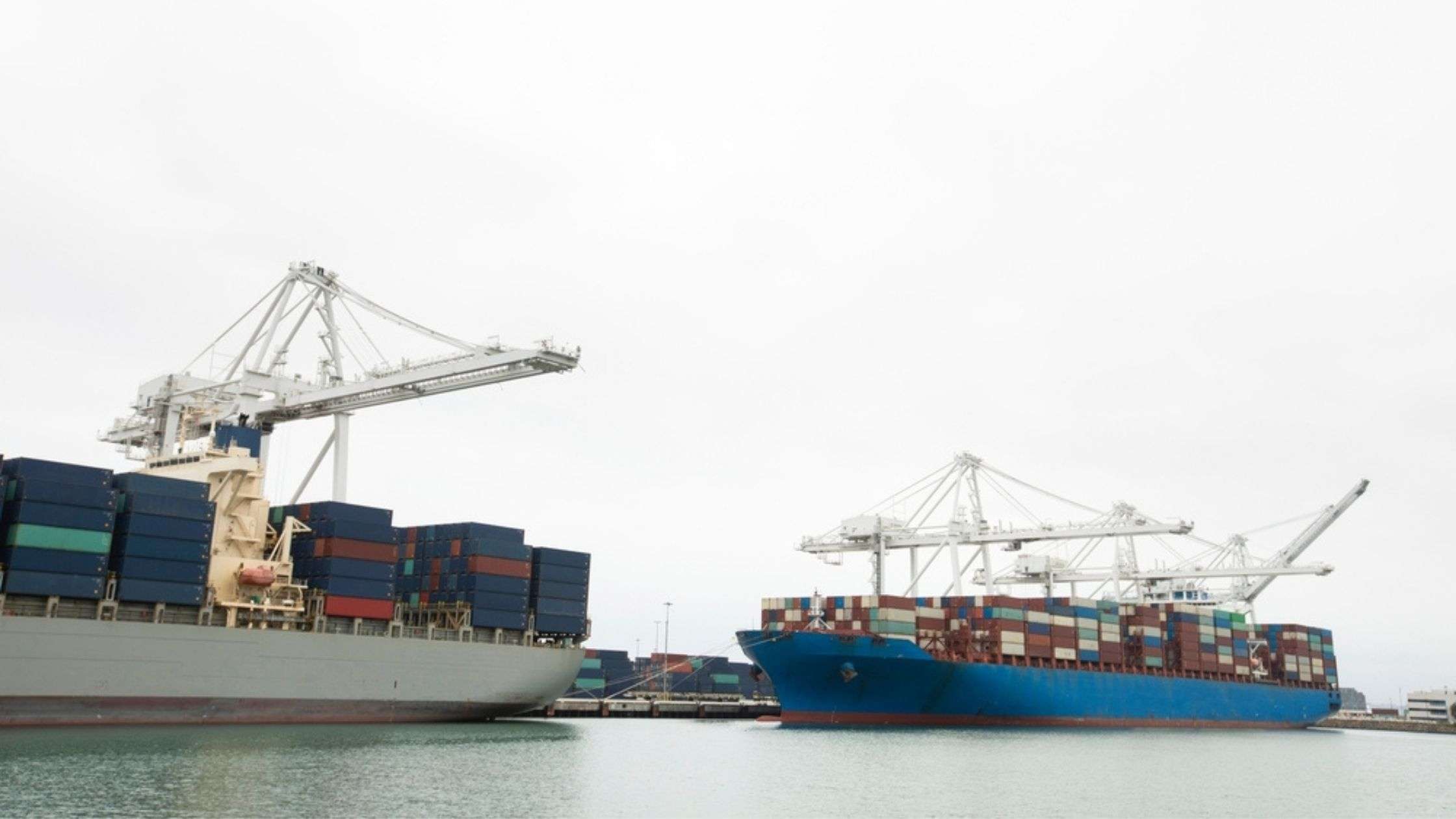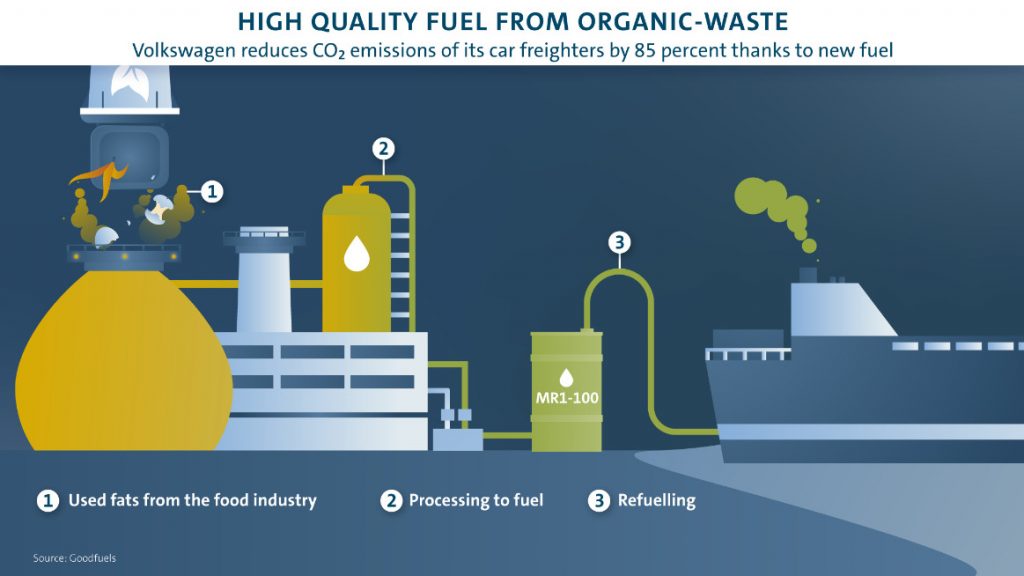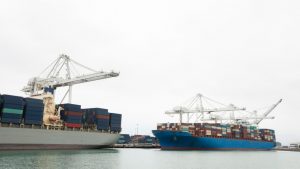The rise of the global economy has moved millions and millions of people worldwide out of extreme poverty. People trade not only across country borders but also across continents. On the one hand, it’s been great for improving the lives of people everywhere. There’s been no other time in history when such a small percentage of the global population lives in extreme poverty.
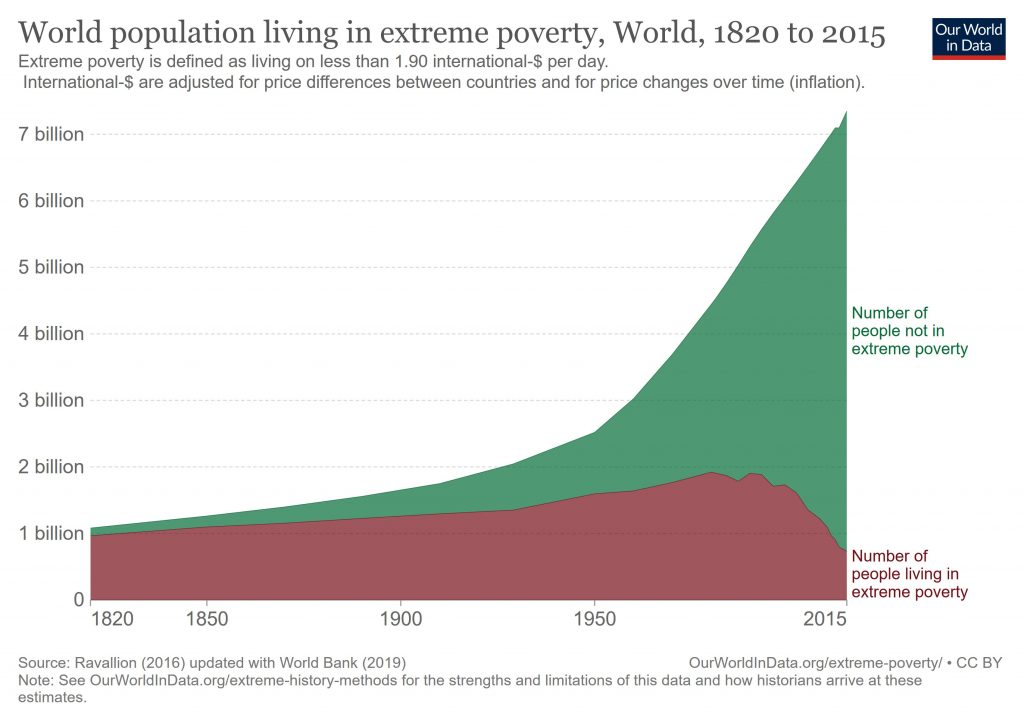 On the other hand, getting tons of goods across the continents and the oceans requires a ton of energy. We don’t use sailing ships to move cargo anymore. The Pamir, a German four-masted barque, rounded the Horn of Africa for the last time in 1949 and ended about 5,000 years of commercial transport by sail.
On the other hand, getting tons of goods across the continents and the oceans requires a ton of energy. We don’t use sailing ships to move cargo anymore. The Pamir, a German four-masted barque, rounded the Horn of Africa for the last time in 1949 and ended about 5,000 years of commercial transport by sail.
In order to save our planet, should we give up on global trade or look for green methods of transportation? What is the greenest method of transportation for industry? The answers will surprise you.
Getting Goods Across the Oceans
Global trade means plying the oceans. It isn’t practical for manufacturers to open a factory on each continent. Instead, goods sometimes take to the skies, but more frequently they cruise the seven seas. Between 80% and 90% of the world’s goods are shipped across the seas.
Just look at the routes for goods leaving China or the Asian coast. These ships use three primary routes that take them over the Pacific Ocean, the Indian Ocean, and the Atlantic Ocean.
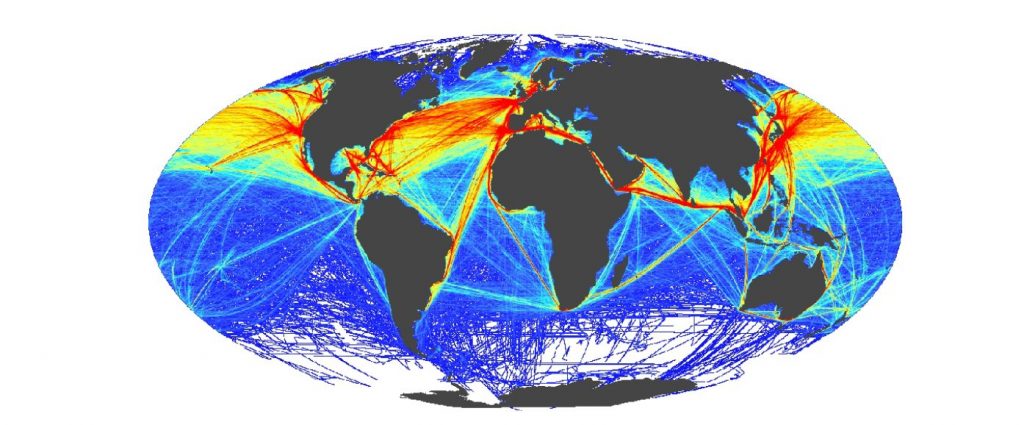
Pacific Route
Ships taking the Pacific route by heading into the southern part of the East China Sea. Then they head north through the Sea of Japan to enter the North Pacific Ocean. Using this route, ships can head to the west coast of Latin America, the west coast of the U.S. (Los Angeles, Long Beach, Seattle), New Zealand, Australia, and western Canada.
Atlantic Route
To take the Atlantic route, ships head south from China and go into the Indian Ocean, and around the Cape of Good Hope. From there, the ships can enter the Atlantic and reach western Europe and the east coast of the U.S. (New York, Miami, Houston, Savannah), or the east coast of South America.
Indian Route
This route is primarily used to move oil. Ships follow the Atlantic route, but instead of rounding the Cape of Good Hope, they sail through the Indian Ocean to the Arabian Sea.
Standard Shipping Fuels
The most common fuel used today by the engines that power freight ships is heavy fuel oil. Until the 1950’s most ships burned coal to operate boilers that created the steam that powered the engine. By the 1960’s most freight ships converted to heavy fuel oil. It burned cleaner than coal and fuel oil is a much more energy-dense fuel. That means you get more energy from the same capacity.
When you cut down on the amount of fuel you must carry, you create more space to carry cargo. And hey, carrying that cargo is what freighters are all about. You also need fewer crew members onboard a ship running on fuel oil. No need for strong arms and backs to continually shovel coal to keep the boiler running.
Heavy fuel oil and the environment
Heavy fuel oil is leftover from the oil refining process. So, in a way, it is an upcycled product. But that doesn’t mean it’s “clean”.
Nitrogen oxide and sulfur oxides are still byproducts of burning heavy fuel oil. But regulations limiting the amount of nitrogen oxide and sulfur oxides tighten every year. The International Maritime Organization (IMO), a unit of the United Nations, sets emissions standards for ships.
For example, the sulfur content has dropped from 4.5% in 2011 to 0.5% or less in 2022. That’s a substantial reduction. When it comes to greenhouse gas emissions, the IMO requires ships to reduce their 2008 levels 40% by 2030.
Alternative Shipping Fuels
The maritime industry is adaptable. If it wasn’t freighters would still be using manpower and wind to move their cargo. The focus on alternative fuels has been on alternative fossil fuels like natural gas and biofuels.
Liquified natural gas
Liquified natural gas (LNG) looks like a promising alternative to heavy fuel oil. Switching to LNG helps freighters meet those more stringent IMO sulfur regulations. Many cruise ships and freighters are already making the switch.
Except a recent report found those LNG-powered engines leak methane. And they leak it a lot. LNG engines leak 82% more methane (a potent greenhouse gas) than their heavy fuel oil alternatives. Oops!
Biofuels
Researchers from the US Department of Energy, the Oak Ridge National Laboratory, and other research facilities in the US are developing heavy fuel oil and biofuel blends that reduce those pesky emissions problems.
Ships can’t turn on a dime, but it turns out fuel researchers can. The idea of biofuels for shipping only surfaced in 2018 and by 2021 there was already a product on the market, MR1-100. Volkswagen, the car manufacturing company, had already switched to this fuel for use by freighters that deliver their cars across the globe.
Every year, Volkswagen ships 2.8 million cars on cargo ships. If other shippers commit to using this or other forms of biofuels, just imagine the impact on greenhouse gasses. Remember, Considering that 80% – 90% of the world’s trade travels on ships, this is an incredible breakthrough and great news for the environment.
Air Cargo as Green Transportation
Cargo planes fly really fast, but their fuel economy is for the birds. Pun intended.
A plane may fly 460 miles per hour, but it only gets 4.5 miles per gallon of fuel. Considering that it is over 7,000 miles from Shanghai to New York, you can move freight fast by air, but it takes an incredible amount of energy.
Boeing’s largest cargo plane is the 747-8F. The payload for this plane is 292,400 pounds. That’s not even close to the amount of cargo a ship can carry.
Comparing a ship to a plane, the plane carries a hair under 300,000 pounds. The freighter carries well over 10,000 containers and each container weighs up to 64,000 pounds.
Let’s just go ahead and cross air cargo off the green transportation list. It just can’t carry enough freight and it uses way too much fuel.
What About Buying Local?
People who love the environment always to tell you to buy locally because it reduces transportation. The greenest transportation for business usually involves the shortest trip. But buying locally isn’t as simple as you think.
Define local
Unless you live in Marion, Ohio you really can’t buy a Whirlpool dryer locally. That’s because Marion is where Whirlpool dryers are manufactured.
Now, you can still buy that Whirlpool dryer from a local business and feel like you are buying locally and saving the environment. But in reality, you aren’t buying local. That’s because whether you buy your dryer from a local big box store or a small local appliance dealer, the store is local, but the product isn’t.
Your dryer left the factory and went to a Whirlpool distribution center. From there, it went to a retailer’s distribution center. From the retailer’s distribution center, it traveled to your local store. Unless you live in the appliance store, the dryer had to travel to your house.
It’s only 138 miles between Muncie, Indiana, and Marion, Ohio. But if you live in Muncie and buy a Whirlpool dryer, that appliance is going to travel way more than 138 miles to reach your house. Even if you buy it locally. So, buying local doesn’t always mean the product doesn’t travel extensively. Even if the gas-powered transport operated as eco-friendly as possible, it still traveled further than you think.
Seasonality problems
Farmer’s markets offer a great selection of locally-grown produce and consumer products. Your local market will probably offer soaps and honey along with fresh produce and meats.
Your farmer may even drive the goods to the market using an electric vehicle or a vehicle with a hybrid engine. Yay! Now that’s really green transportation in business!
That vine-ripened tomato you purchase is fresh, local, and may even get bonus points for being organically grown. Too bad you can’t buy it all year long.
When it comes to food, buying locally presents real problems. Unless you can buy enough food to can or freeze, you can only eat locally during the local growing season. Unless you live in South Florida or South Texas, you aren’t eating a locally grown tomato on your BLT in the Winter. And if you do live in the south, you aren’t eating Caprese salad with local tomatoes in August or September.
Local just isn’t the answer for every product.
Grown Locally Versus Processed Locally?
Trade with the least amount of impact on the environment involves manufacturing products as close to their sources as possible. The longest trip should be from the manufacturer to the customer, not the source to the factory.
Buying a domestic or foreign brand car
When the time comes to purchase a vehicle, you may think that the domestic brand is the brand that travels the least. But you could be very wrong. Let’s say you buy a Chevrolet Bolt electric vehicle and really feel good about buying a car from a US automaker. But the drive train and battery (the major components of the car) are made in Korea and shipped to the US. The transportation involved in manufacturing your transportation would be greener if you purchased a Honda Ridgeline. That’s because while Honda is a Japanese auto manufacturer, the Ridgeline is manufactured in Lincoln, Alabama from mainly US-made parts.
Furniture made where it grew?
Cars aren’t the only products where the greenest transportation will surprise you. Lazy Boy is a famous US brand of furniture. Their furniture is manufactured from products they obtain in the Southeastern US. Lazy Boy sources components such as foam, textiles, and hardwoods from Louisiana, Mississippi, Indiana, North Carolina, and Kentucky. Then they bring them all together in Tennessee to make their recliners and couches. The materials used in manufacturing don’t travel much to get to the factory. Even if they ride on a diesel-powered 18-wheeler, it’s pretty green transportation because nothing travels very far.
Ashley is another US furniture brand. They license their name to Ashley Homestore retailers all over the US. Ashley operates manufacturing facilities in Wisconsin, but also in Vietnam and China. Since the 1980’s most of their furniture has been manufactured in China. Believe it or not, there’s a good chance the wood in their Chinese-made furniture started in the US. Forest products are the third-largest export in the US. And much of it goes to China where it is converted into goods and shipped back to the US. Shipping raw goods to a country that ships them back to you is the opposite of green transportation in business.
A Tale of Two Floors
Flooring is another product where the amount of transportation involved will surprise you. Whether you are looking at hardwood or engineered wood, you should check into how much that wood traveled from the time it was harvested to the time the planks arrive at your home.
The US grows much of the oak and maple that go into hardwood and engineered wood flooring. And the US is home to many flooring manufacturers. But that doesn’t mean the wood is converted from log to engineered or hardwood flooring plank here in the US.
Let’s say you are looking at an engineered wood product from one of the major American flooring manufacturers. Would you be surprised to find out that the actual manufacturing happened in Cambodia? It’s true. When the US increased tariffs on products imported from China, some companies expanded in Cambodia. Cambodia or China, it doesn’t matter. What matters is that the wood leaves the US to be converted into flooring and then shipped back. That flooring makes a round trip to Asia before it ever hits the store. That’s as far as you can get from green transportation in trade.
Now, compare that US wood flooring to bamboo flooring that comes from China. The bamboo grows in China (where it grows crazy fast) until it is harvested and then sent to a factory in China for processing. After the bamboo is converted to flooring, it gets on the ship and heads to the US. It has a very long trip to make. The distance from the port in Shanghai to the port in Los Angeles is over 6,500 miles and it will take about 23 days. But it will use less energy in transportation than the US brand that is made overseas. It’s greener transportation because it’s a one-way trip.
The Greenest Transportation for Trade
Is your mind blown about how much transportation is involved in getting goods to your doorstep? Do you see how buying local or buying a domestic brand isn’t always the greenest when it comes to transportation?
Let’s keep things simple. Remember most goods travel on ships. That’s just the way it is. And it is true that ocean freighters currently rely on fossil fuels, but the fuel they use is the byproduct of refining. So, it is an upcycled product. And biofuels show tremendous promise in the shipping industry.
But most importantly, the greenest transportation for trade moves materials and goods the least. Components don’t travel far to make it to the factory. Whether it’s the bamboo in the Ambient flooring or the foam in the Lazy Boy sofa, both make a short trip to the manufacturing facility before they make their way to your home.
Now that’s real green transportation for industry.

About the Author
Cheryl is our go-to guru for all things sustainable living. She’s on a mission to make your family and our planet thrive! With a heart as big as her passion for sustainability, Cheryl brings you the freshest insights on eco-friendly building products and energy efficiency. 🌱💡
And hey, did you hear about the eco-friendly lightbulb that went to therapy? It finally found its inner “enlightenment”! 😄 Join Cheryl on this green journey, where she’ll tackle your concerns with a smile and a sprinkle of eco-humor!

